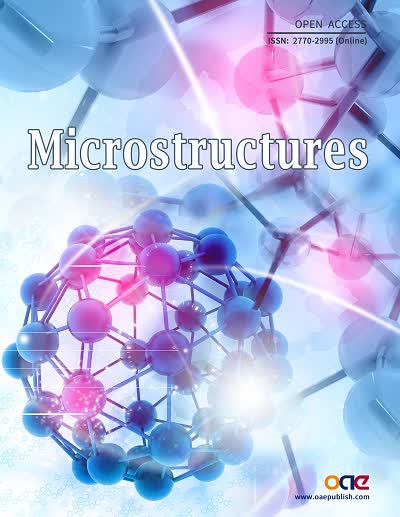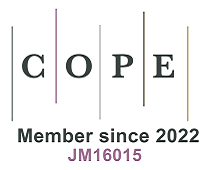
Topic: Biological Nanomaterials for Targeted Drug Delivery and Gene Therapy
Guest Editor(s)
Prof. Junjie Xiao
Cardiac Regeneration and Ageing Lab, Institute of Cardiovascular Sciences, School of Life Science, Shanghai University, Shanghai, China.
Asst. Prof. Yiliang Lin
Department of Chemical and Biomolecular Engineering, National University of Singapore, Singapore, Singapore.
Special Issue Introduction
In recent years, the rapid advancement of nanotechnology has significantly transformed the field of biomedical research, particularly in the areas of drug delivery and gene therapy. Biological nanomaterials, such as exosomes, liposomes, quantum dots, and polymer-based nanoparticles, have demonstrated remarkable potential in addressing the challenges conventional therapies pose. These nanomaterials offer unique platforms for the targeted and efficient delivery of therapeutic agents—including small molecules, proteins, lncRNA, miRNA, mRNA, and siRNA—directly to specific cells and tissues. Such targeted delivery not only enhances therapeutic efficacy but also minimizes off-target effects, thereby reducing systemic toxicity.
The growing interest in biological nanomaterials stems from their intrinsic biocompatibility, versatile cargo-carrying capacity, and flexible surface modification capabilities. For instance, exosomes are naturally secreted nanovesicles that facilitate intercellular communication. Their ability to cross biological barriers and evade immune clearance makes them ideal candidates for delivering genetic material in gene therapy. Similarly, liposomes, composed of synthetic lipid bilayers, can encapsulate both hydrophilic and hydrophobic drugs, providing a versatile platform for controlled release. Quantum dots and other inorganic nanoparticles, with their tunable optical properties, have opened new avenues in drug delivery, particularly in real-time imaging and monitoring of therapeutic responses.
This Special Issue of Microstructures aims to explore the latest developments in biological nanomaterials and their applications in targeted drug delivery and gene therapy. We intend to address several key challenges, including the design of nanocarriers to improve delivery efficiency, functionalization of nanomaterials to enhance targeting, and the translation of preclinical findings into clinical applications. The issue will cover a wide range of topics, including:
● The design, advantages and application of nanoparticles, such as exosomes, liposomes, quantum dots, gold nanoparticles, and polymeric nanoparticles, for gene delivery in cancer, neurodegenerative diseases, tissue injury, and other human diseases;
● Impact of microstructural design on the key functional properties of nanomaterials in drug transport and gene therapy;
● Recent advances in quantum dots and other nanostructures for precision drug delivery and real-time bioimaging;
● The role of nanomaterials in enhancing therapeutic efficacy, overcoming drug resistance, and reducing side effects;
● Explores the impact of micro/nanostructures on the efficiency of nanomaterial-based delivery systems;
● The loading and release mechanisms of drugs or genes (lncRNA, miRNA, siRNA, mRNA), and the strategies enhancing the targeting and biocompatibility of nanomaterials through surface modification and functionalization;
● The challenges of scaling up nanomaterial-based therapies for clinical application include safety, immunogenicity, and regulatory considerations.
The growing interest in biological nanomaterials stems from their intrinsic biocompatibility, versatile cargo-carrying capacity, and flexible surface modification capabilities. For instance, exosomes are naturally secreted nanovesicles that facilitate intercellular communication. Their ability to cross biological barriers and evade immune clearance makes them ideal candidates for delivering genetic material in gene therapy. Similarly, liposomes, composed of synthetic lipid bilayers, can encapsulate both hydrophilic and hydrophobic drugs, providing a versatile platform for controlled release. Quantum dots and other inorganic nanoparticles, with their tunable optical properties, have opened new avenues in drug delivery, particularly in real-time imaging and monitoring of therapeutic responses.
This Special Issue of Microstructures aims to explore the latest developments in biological nanomaterials and their applications in targeted drug delivery and gene therapy. We intend to address several key challenges, including the design of nanocarriers to improve delivery efficiency, functionalization of nanomaterials to enhance targeting, and the translation of preclinical findings into clinical applications. The issue will cover a wide range of topics, including:
● The design, advantages and application of nanoparticles, such as exosomes, liposomes, quantum dots, gold nanoparticles, and polymeric nanoparticles, for gene delivery in cancer, neurodegenerative diseases, tissue injury, and other human diseases;
● Impact of microstructural design on the key functional properties of nanomaterials in drug transport and gene therapy;
● Recent advances in quantum dots and other nanostructures for precision drug delivery and real-time bioimaging;
● The role of nanomaterials in enhancing therapeutic efficacy, overcoming drug resistance, and reducing side effects;
● Explores the impact of micro/nanostructures on the efficiency of nanomaterial-based delivery systems;
● The loading and release mechanisms of drugs or genes (lncRNA, miRNA, siRNA, mRNA), and the strategies enhancing the targeting and biocompatibility of nanomaterials through surface modification and functionalization;
● The challenges of scaling up nanomaterial-based therapies for clinical application include safety, immunogenicity, and regulatory considerations.
Submission Deadline
20 Jun 2025
Submission Information
For Author Instructions, please refer to https://www.oaepublish.com/microstructures/author_instructions
For Online Submission, please login at https://oaemesas.com/login?JournalId=microstructures&IssueId=M241029
Submission Deadline: 20 Jun 2025
Contacts: Caroline Zhang, Assistant Editor, Assistant Editor, assistant_editor@microstructj.com









